Neptune’s Cave in Alghero
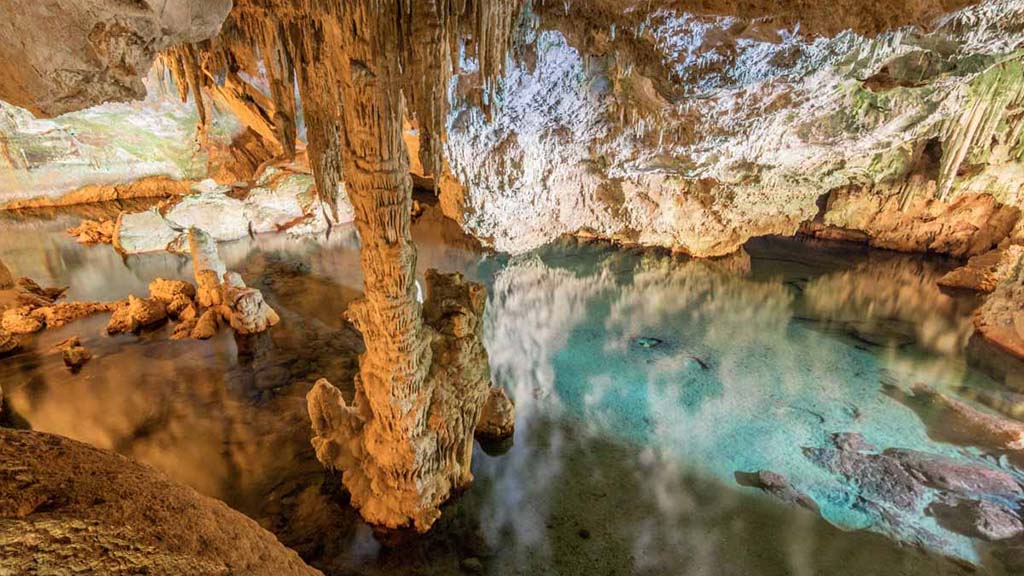
Alghero has received many gifts from nature, the most precious of which is perhaps Neptune’s Cave at Capo Caccia.
It is no exaggeration to say that it will leave you speechless. Would you like to know what’s inside?
We will tell you what you are going to see when you enter, how to get there and how to organise your visit.
But first, let’s tell you a few stories you need to know.
Stories from Neptune’s Cave
Most probably, we will never know how and when the cave was actually discovered.
The oldest surviving source says that the first to explore it was a certain Ferrandino, a simple fisherman from Alghero, in the 1700s.
However, we do not know whether to believe it or not.
The presence in the area of remains of settlements dating back to the 1st century leads us to suspect that the place was already known and explored by the ancient Romans.
The first excursions
Whether the ‘discovery’ of the adventurous Ferrandino is real or not, regular visits to the cave were organised from 1700 for at least 150 years.
Excursions took place exclusively in the summer through the hiring of boats from Alghero.
There was a lot of expectation and trepidation. The boat would leave around midnight and reach the cave at dawn.
In the darkness of the early hours of the day, sailors would precede the visitors into the cave to illuminate it, lighting the candles generously distributed inside.
Imagine what a spectacle that was.
The Escala del Cabirol
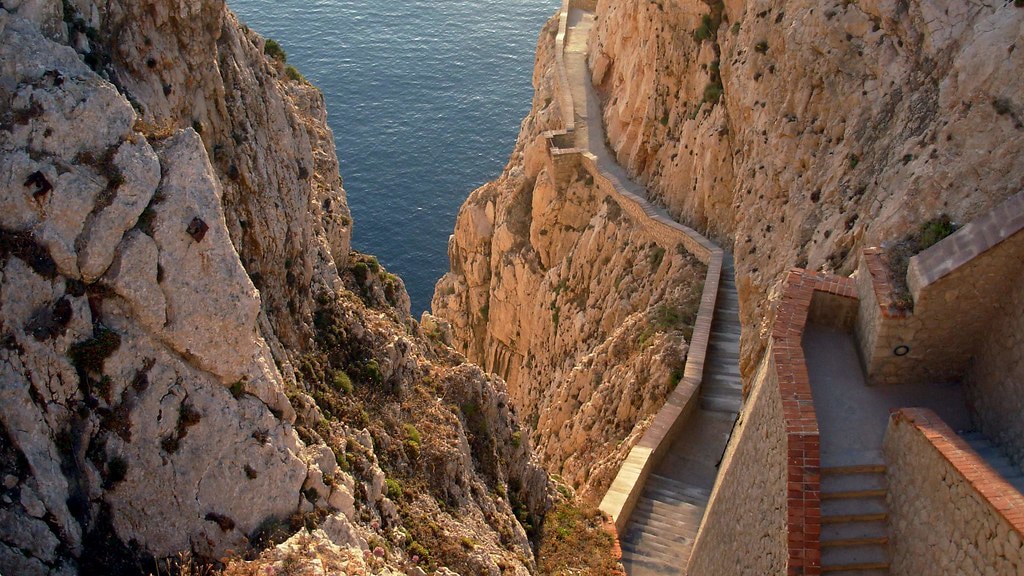
Neptune’s Cave was accessible only by sea until 1954.
In that year, the Escala del Cabirol – or stairway of the roe deer, to translate its name from the Catalan language of Alghero – was inaugurated, making it possible to reach the cave by land.
The staircase is 400 m long and consists of 660 steps. It was designed by Antoni Simon Mossa, an architect and philosopher who was superintendent of cultural heritage at the time.
The Escala del Cabirol follows a 119-metre-high rock face.
We can promise you that the view of the magnificently constructed staircase descending along the sea wall is already a show worth seeing.
Before entering the cave, however, we also want you to know about the Madonna del Frontuni.
The Madonna del Frontuni
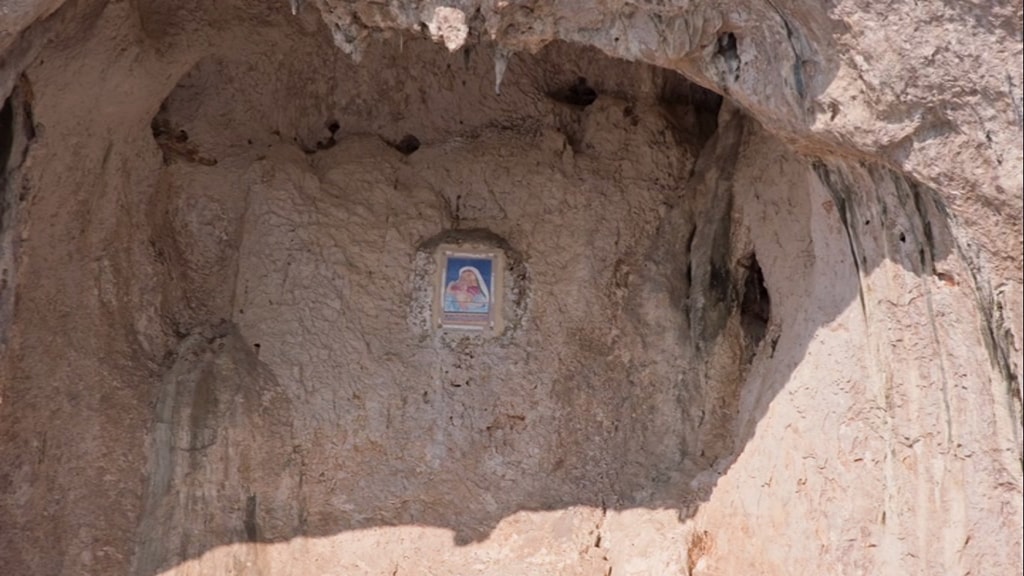
An essential stop for those arriving by sea to visit the cave is a hollow in the cliff where we can see the painting of the Holy Virgin and Child that some fishermen from Torre del Greco brought here as a gift during the 19th century.
Today, in this place, there is still a fascinating tradition: at the end of the coral-fishing season, in September, the fishing boats organise a festive procession to pay homage to the Madonna del Frontuni.
And now for the most extraordinary sight of all: Neptune’s Cave
Do you want to know what’s inside?
The halls of Neptune’s Cave
The cave is huge and has been compared to a royal palace in terms of structure and interior spaces, since they are reminiscent of the halls of a castle.
As soon as you enter, you will be left breathless in front of the room that houses Lake La Marmora, considered one of the largest salt lakes in Europe.
What all the spaces have in common are the stalagmite formations, real natural sculptures that often assume familiar shapes.
This is why, during the tour, you will find the “Holy Water font”, the “Christmas tree” or the “Great Organ”.
Usually the visit ends in the ” Music Tribune “: a natural balcony overlooking the lake which has this name for special reasons.
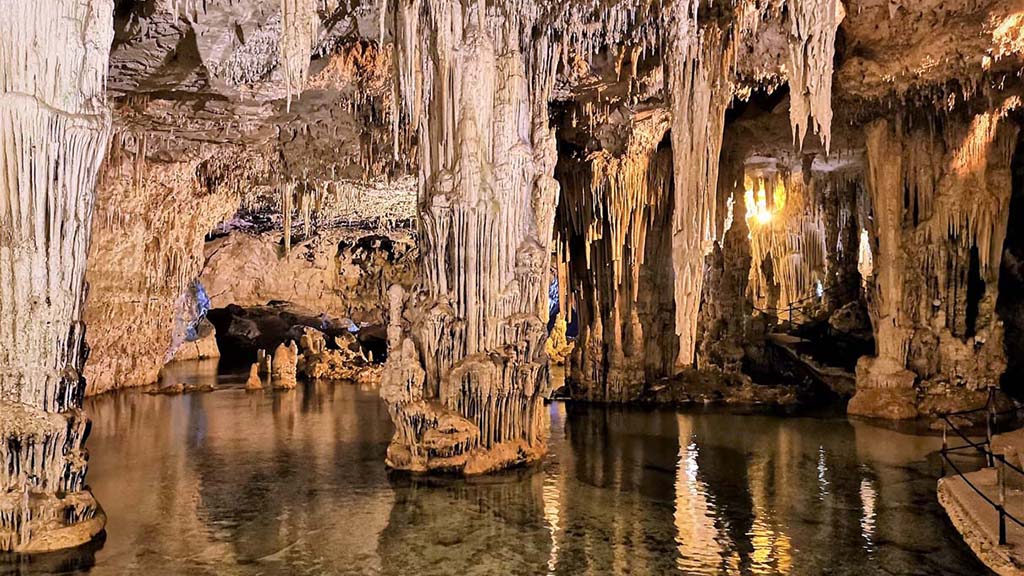
The Music Tribune
Do you remember the first excursions we mentioned? They were so successful that illustrious personalities, such as monarchs and members of the court, used to organise special tours.
During such events or other special occasions, when the tour ended, the guests were taken by boat to a small beach in the Lake Hall.
There they could dance while an orchestra played from the Music Tribune.
We can only imagine how wonderful it must have been to be there!
How to reach Neptune’s Cave
The cave is easily reached from the centre of Alghero by car or bus.
In fact, the site is only 25 km from the city and the route itself is already a spectacle: a succession of breathtaking landscapes that will make the journey extremely pleasant.
From Alghero, head towards Fertilia via the scenic SS127bis state road.
Once on Provincial Road 55 you can reach Escala del Cabirol on the most extreme point of Capo Caccia.
Before going to the cave, it is important to ask for availability for visits and organisation info by contacting the facility.
Where to stay when visiting Neptune’s Cave
The most convenient solution when you come on a holiday to Sardinia is to stay at a place from which you can easily reach all the attractions and points of interest in a certain area.
And of course, even the beaches of Alghero!
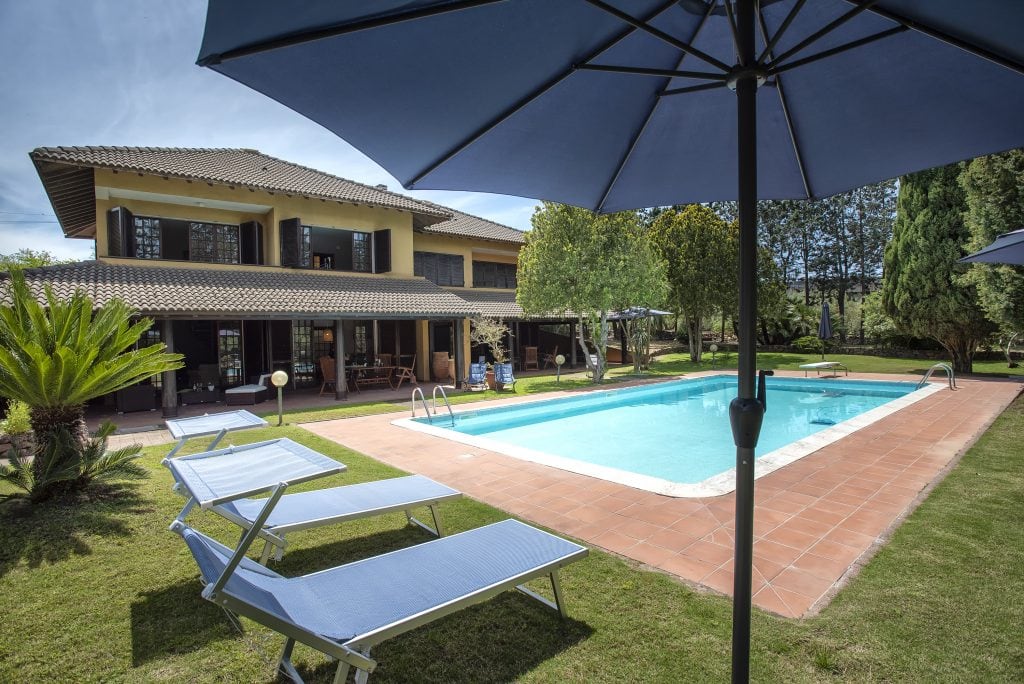
Domus 81 Luxury Villa is located in Sassari in a quiet area that allows you to enjoy your privacy and relaxation and is just a few minutes from the historic centres of Sassari itself and Alghero, well connected to tourist sites, sports centres and the most beautiful destinations in north-western Sardinia.
Consisting of two units with independent entrances, a private car park and a garden with swimming pool, it can accommodate up to 12 people.
Find out more about Domus 81
